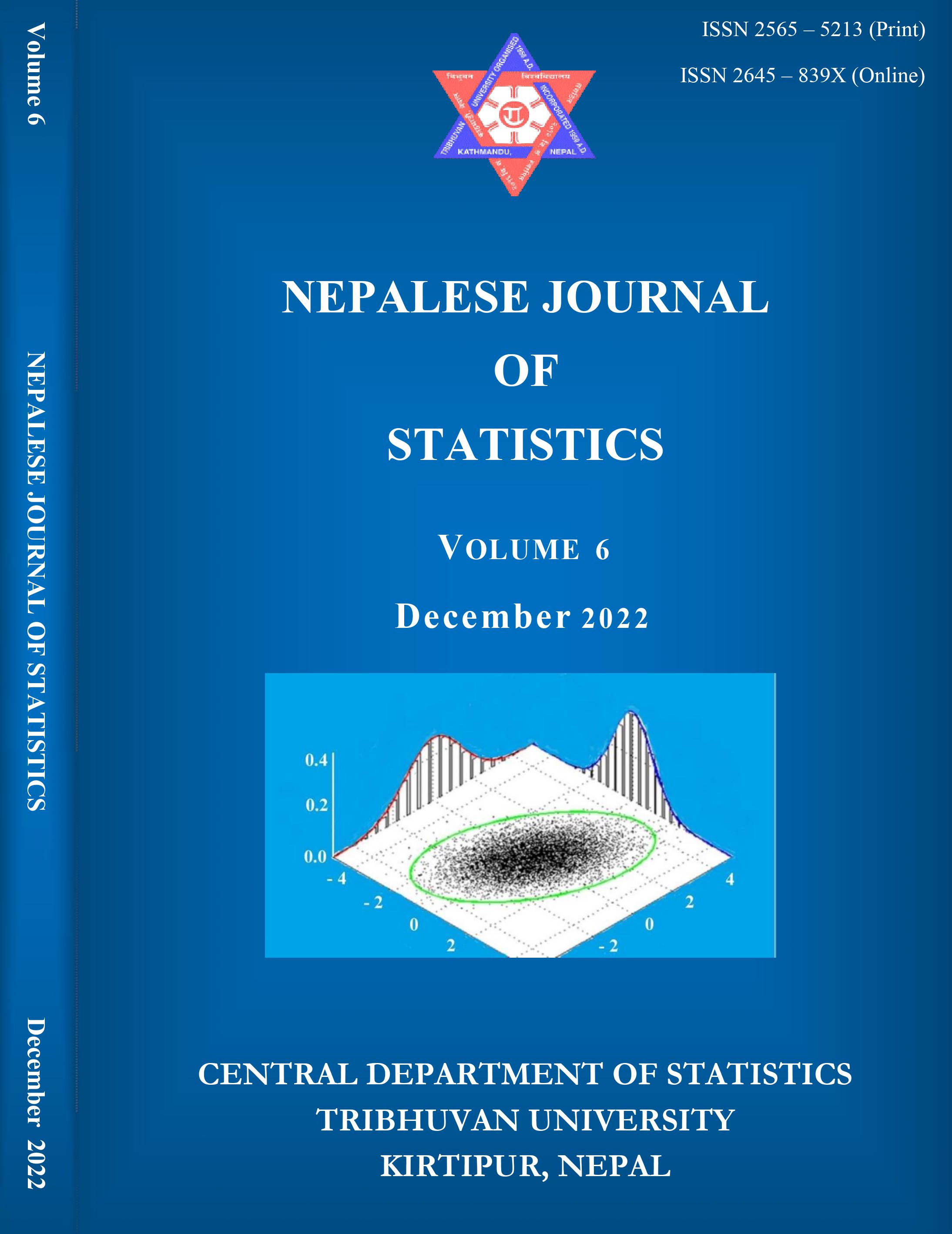A Comparison of Trend Models for Predicting Tea Production in Bangladesh
DOI:
https://doi.org/10.3126/njs.v6i01.50804Keywords:
Autocorrelation, GDP, outlier, tea production, time series, trend modelsAbstract
Background: Tea (Camellia sinensis) is a manufactured popular beverage that is mostly consumed around the globe including Bangladesh. Tea consumptions are increasing day by day due to its healthcare effects in the world as well as in Bangladesh. To meet the ever-growing population’s demand in Bangladesh, it is important to predict the production of tea.
Objective: Although it is found in the literatures that studies have examined different trend models for tea and agricultural crops, no such study has been found to choose best trend model for predicting the production of tea in Bangladesh. Therefore, an attempt is made to identify the best trend model based on different model selection criterion for the prediction of tea production in Bangladesh.
Materials and Methods: Six trend models namely linear, logarithmic, inverse, quadratic, cubic, and compound were applied on tea production dataset (1976 to 2020) collected from the Food and Agriculture Organization Corporate Statistical Database (FAOSTAT) website. For justification of the model, different model section criteria have been checked.
Results: The results showed that the compound trend model is the most suitable among considered trend models for predicting the tea production in Bangladesh. Finally, the yearly growth rate of tea production for the period from1976 to 2020 found the compound growth rate of tea production in Bangladesh as 1.02 per year. It is important to note that for the next five years, forecasted increasing rate could be 4840.91 tonnes for the yearly tea production of Bangladesh. Furthermore, remarkable increased progresses of production have been noticed as 23585.7 and 21691.01 tonnes, respectively for the years 2019 and 2020 by the re-estimated model due to the proper nourishing and maintaining the input supply chain from government ends.
Conclusion: In the respect of the growing demand, the best-fitted trend model applied herewith through outlier checking and related sophisticated justification tools on the tea production area could help to accumulate knowledge for the practitioner.
Downloads
Downloads
Published
How to Cite
Issue
Section
License
© Central Department of Statistics, Tribhuvan University, Kirtipur, Kathmandu, Nepal
The author of article must sign the copyright permission or the author must assign copyright to the Central Department of Statistics, Tribhuvan University prior to publication.
All rights reserved.




